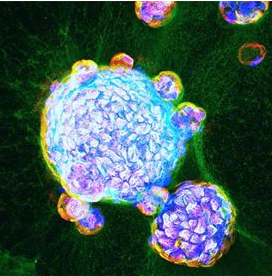Cuyamaca Alum Conducting COVID Research
Courtney Tindle says she has always been somewhat of a “nerd” when it came to science. During her senior year at Granite Hills High School, she took Algebra 3, not because it was a requirement, but simply for fun. As a first generation college student, her interest in science was encouraged by her parents, and they championed her pursuit of high education.
“Both my mom and dad were very supportive and helped me with my path. But my mom always pushed me as a young child to adulthood to go to college,” said Tindle.
From Cuyamaca Back to Cuyamaca
After high school, Tindle attended Cuyamaca College where she says she got a lot of hands-on experience in the biology laboratory.
“Cuyamaca really helped prepare me for the second half of my undergraduate work at UCSD. I already had a strong laboratory foundation when I joined a pathology lab at UCSD,” said Tindle.
After transferring to and completing her degree in biology, cell biology, and biochemistry at UCSD, Tindle returned to Cuyamaca as biology instructor. For three years she worked alongside the Cuyamaca College professors who helped her excel in the sciences. The transition from student to colleague could have been intimidating, but Tindle says it was made easy by the faculty.
“Everyone’s very inviting at Cuyamaca, so it didn’t feel weird at all,” said Tindle.
COVID-19 Research
Just months before the pandemic hit, Tindle started a new position as staff director and researcher at the Humanoid CORE team at UCSD. The team specializes in disease modeling and clinical trials. At the time, most of the UCSD was shut down, but Tindle and her team had special access to the laboratories to conduct their COVID-19 research.
“We worked throughout the whole pandemic. I don’t think we ever stayed home,” said Tindle.
“Once the pandemic hit, we wanted to contribute.”
Tindle and her team conducted research on “mini lungs” -- stem cells that are grown into tiny lung organs – to find treatments for respiratory diseases, including COVID-19. The mini lungs, which have been infected with the COVID-19 virus, are treated with different therapeutics to see how they react. This work is done in advance of clinical trials on humans and is more accurate and humane than animal testing. The research has been applied to new variants and other respiratory diseases.
You can read more about the research here.
